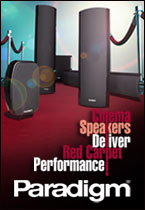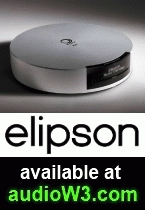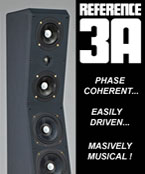
You might have actually liked 8-tracks - or not even know what they are - and vinyl, and cassettes, but unless you’re a DJ, you don’t buy any of these anymore. Why? Because the trend over the past 20 years has been towards media formats with increased space for more songs, and better sound quality in each song. And now, to move beyond CDs for music and DVDs for video, once again we have a new rider on the horizon, and its name is Blue. Blue-laser, that is, and it looks like it’s here to stay.
Red-laser days are counted
Light - and lasers, which are just concentrated light beams - travel in waves, just like water coming onto a beach. There are different areas of the light spectrum, each corresponding to a different colour - like the cover of Pink Floyd’s Dark Side of the Moon. CDs and DVDs on the market today use a red-laser to record and read information.
Red-lasers use the red portion of the light spectrum, and the height, or length, of the wave is much bigger than blue-lasers, which use the blue portion of the light spectrum. All these dimensions are measured in nanometers (nm - one-billionth of a meter), and the length of the wave of light is referred to as lambda. For a red-laser you have a lambda of about 650nm, and for blue-laser it’s about 425nm. So it doesn’t take a genius to realise that the thinner laser beam will be able to write more information per disc side because it makes a smaller spot on the face of the disk.
So by creating smaller grooves and pits, the same size media (i.e. a compact disc) can hold much more information. How much more? About five times as much, which means a lot more songs and video content.
Applications
Since all audio and video is compressed to a certain extent before it is recorded onto a CD or DVD, the quality of the audio and video itself will also increase because the added space will allow recording of less compressed audio/video information. All of this adds up to more capacity for songs, movies, and recorded HDTV per disc, with better quality to go along with it. But all this isn’t just for “next-generation” DVDs; the applications also extend into televisions. With blue-laser LEDs (Light Emitting Diodes) the potential for larger, clearer TVs extends beyond 100″ diagonally in size, with no concern for loss of clarity or sharpness. And even if you don’t want a Jumbo-Tron in your living room (but who wouldn’t?!), having a 36″ blue-laser TV would offer much better picture clarity and crispness. Of course, this is all in the future; for now, we are just at the beginning of utilizing this new technology in consumer applications. But what exactly is going on, and who is making what? Presently, blue-laser technology is only being used to produce blank discs, and there are currently four different standards appearing on the market.
Competing Players
Blue-lasers were developed in Japan around 1993, and even though Philips, Toshiba, and Sony demonstrated the effectiveness of their applications in 1996, problems with excess heat stalled the production of smaller consumer devices. However, in the past fourteen months, several different groups of companies have signalled their intention to begin producing these discs based on the blue-laser scheme, using their own technology. The Blu-Ray group - Philips, Sony, Hitachi, LG, Matsushita, Pioneer, Samsung, Sharp, and Thomson - came together in February 2002 and announced that they would be combining forces to create the first consumer application using blue-lasers. They released the specifications this past June. The Sony people, however, unveiled another product in early April of this year, made solely by them, but directed towards the corporate community. Blu-Ray, which is directed more towards consumers, has slightly more storage capacity than the just-Sony product - 27 gigabytes (GB) vs. 23.5GB, each per side. The main difference between the two, however, is the data transfer rate; while Sony comes in at 9 megabytes per second (MB/s), Blu-Ray’s is exactly half with 4.5MB/s (1000MB equals 1GB). To put this all into perspective, the vast majority of DVDs on the market - using red-lasers - have a capacity of 4.7GB. Another player in this game, the DVD forum - a group of 212 companies that direct the DVD format - announced their own intention to produce a blue-laser device last November. Earlier this year they began making plans for a 20GB/side disk using technology developed by Toshiba and NEC, who believe that any blue-laser DVDs should remain part of the DVD forum. Calling it the Advanced Optical Disk (AOD), it is scheduled for a second quarter 2004 release, and has the potential to reach 30GB/side before it is finished. This is quite a setback for Blu-Ray, who thought that by joining forces, they would prevent competing formats of blue-laser discs from appearing on the market, which is what has happened to the splintered DVD market - DVD+RW, DVD-R, DVD-RAM, DVD-RW, and DVD+R are all current formats manufactured with different standards by different groups of companies.
Plasmon also announced their intention to become a player, saying it will offer Ultra Density Optical (UDO) drives, which are targeted directly at Sony’s market, and will carry a transfer rate of 8MB/s - slightly less than Sony - and a capacity of 30GB/side - slightly more than Sony. Finally, Sanyo has announced that it will begin demonstrating its own product at the end of the summer, and production at the end of the year, claiming to double the capacity of 27GB/side to 54GB/side by a “dual layer” on the disk. So, with all this happening, stay tuned for more news in the coming months, and in about half a year for better video, more songs, and lots of price wars.
Click here to discuss this article on the CANADA HiFi Forum














